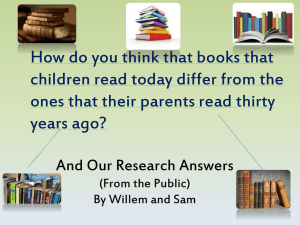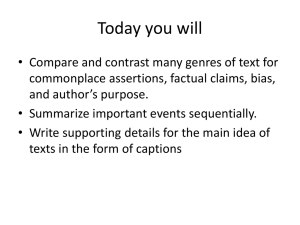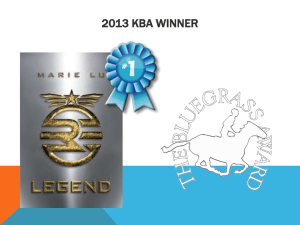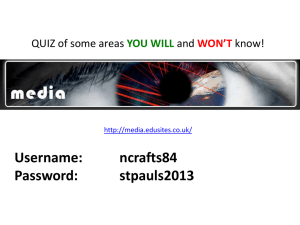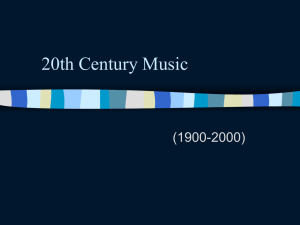Stagecoach
advertisement
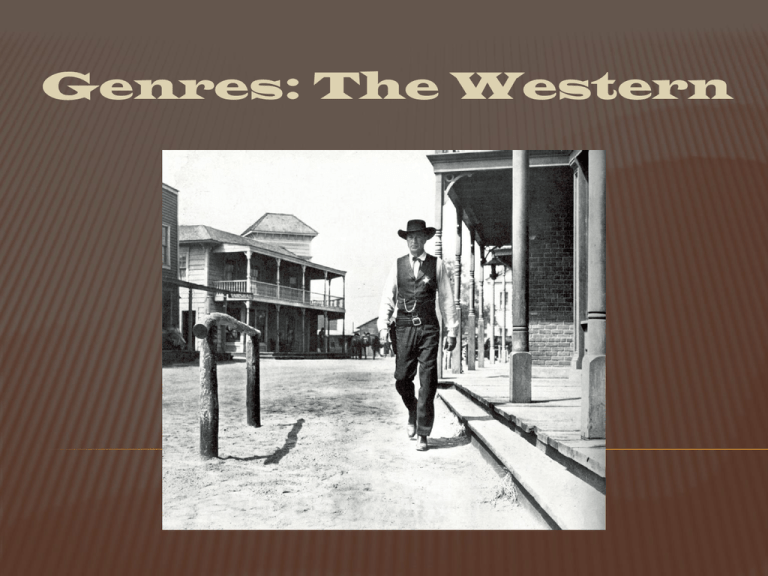
Genres: The Western WHAT IS GENRE? A category of artistic composition, as in music, film, or literature, characterized by similarities in form, style, or subject matter – New Oxford American Dictionary Organized categories of texts Exist in academic, popular and industry discourse Put into categories by: Subject matter Conventions Themes Narrative FUNCTIONS OF GENRES Leads the audience to interpret texts in particular ways Lets viewers know what to expect Gives creators ideas about how to put pieces together Industry strategy of appealing to specific audiences EXAMPLES OF GENRE Science Fiction Horror War Epics/Historical Action/Adventure Drama Comedy Crime/Gangster Musicals Sub genres: -Biopics -Detective/Mystery -Disaster -Fantasy -Film Noir -Melodramas -Sports -Supernatural -Thriller/Suspense THE WESTERN GENRE Western Genre Conventions Historical Plot Basis Elements/Themes Iconography HISTORICAL BASIS The Western is an American genre, which interprets and represents its history to itself Set approximately between 1860 – 1910 Period of American western expansion Popular characters based on actual individuals: Wyatt Earp, Jesse James, Wild Bill Hickok THE WESTERN’S PLOT ELEMENTS/THEMES Central Theme: The Binary of Civilization and Savagery/Lawlessness East vs. West Culture vs. Nature Community vs. Individual Settlers vs. “Indians” Train vs. Horse Westerns as American mythology Foundational myth – the forging of a nation WESTERN PLOT ELEMENTS/THEMES Patterns of action The nomadic Westerner comes to a town, purges it of its savage elements, and leaves A group of gunmen are hired to defend villagers from bandits Revenge Plots Narrative Tropes The climactic gunfight Indian attacks The cavalry rescue THE TRADITIONAL WESTERN HERO In between position: mediates between civilization and the lawless frontier Marginalized figure outside of the community Commonly motivated by revenge and/or sense of justice Adheres to a code Stagecoach WESTERN ICONOGRAPHY: MISE-EN-SCENE Geography An actual place: the American West The landscape: deserts, mountains, rivers, Monument Valley Symbolic: wilderness as a site of savagery The frontier: the border of civilization and lawlessness WESTERN ICONOGRAPHY: MISE-EN-SCENE WESTERN ICONOGRAPHY/MISE-EN-SCENE WESTERN ICONOGRAPHY/MISE-EN-SCENE GENRE CYCLES Genres are neither static nor fixed; they undergo change over time with each new film either adding to the tradition or modifying it. Western a popular genre of B movie fare since 1903 Classical Phase: Stagecoach Elevates (John Ford, 1939) the Western to A status Solidifies conventional tropes GENRE CYCLES Post-war Phase High Noon (Frank Zinnemann, 1952) Plot takes place in “real time” Denies the usual generic pleasures Kane as an individual with a code Film editing/framing emphasizes the isolation of the hero GENRE CYCLES Widescreen Westerns The Searchers (John Ford, 1956) Emphasizes the widescreen landscape More complex protagonist The salient techniques of style: cinematography GENRE CYCLES The Revisionist Western The Wild Bunch (Sam Peckinpah, 1969) GENRE CYCLES ‘Spaghetti’ Westerns A Fistful of Dollars (Sergio Leone, 1964) For A Few Dollars More (Leone, 1965) The Good, the Bad, and the Ugly (Leone, 1966) GENRE MIXING Yojimbo (Akira Kurosawa, 1961) Jidaigeki genre Influenced by the films of John Ford Loosely based on Dashiell Hammet’s Red Harvest (1929) Basis for A Fistful of Dollars & Last Man Standing (Walter Hill, 1996) GENRE MIXING: SCIENCE FICTION & THE WESTERN Star Wars (George Lucas, 1977) Influenced by the films of John Ford and Akira Kurosawa: The Searchers & The Hidden Fortress Westworld (Michael Crichton, 1973) Outland (Peter Hyams, 1981) Star Trek (1966-1969) Based on High Noon “Wagon train to the stars” Firefly (Whedon, 2002) GENRE MIXING Post-apocalyptic Western Mad Max 2: The Road Warrior (George Miller, 1981) GENRE MIXING Science Fiction/Horror Alien (Ridley Scott, 1979) Science Fiction/Film Noir Blade Runner (Scott, 1982) Science Fiction/War Starship Troopers (Paul Verhoeven, 1997)






